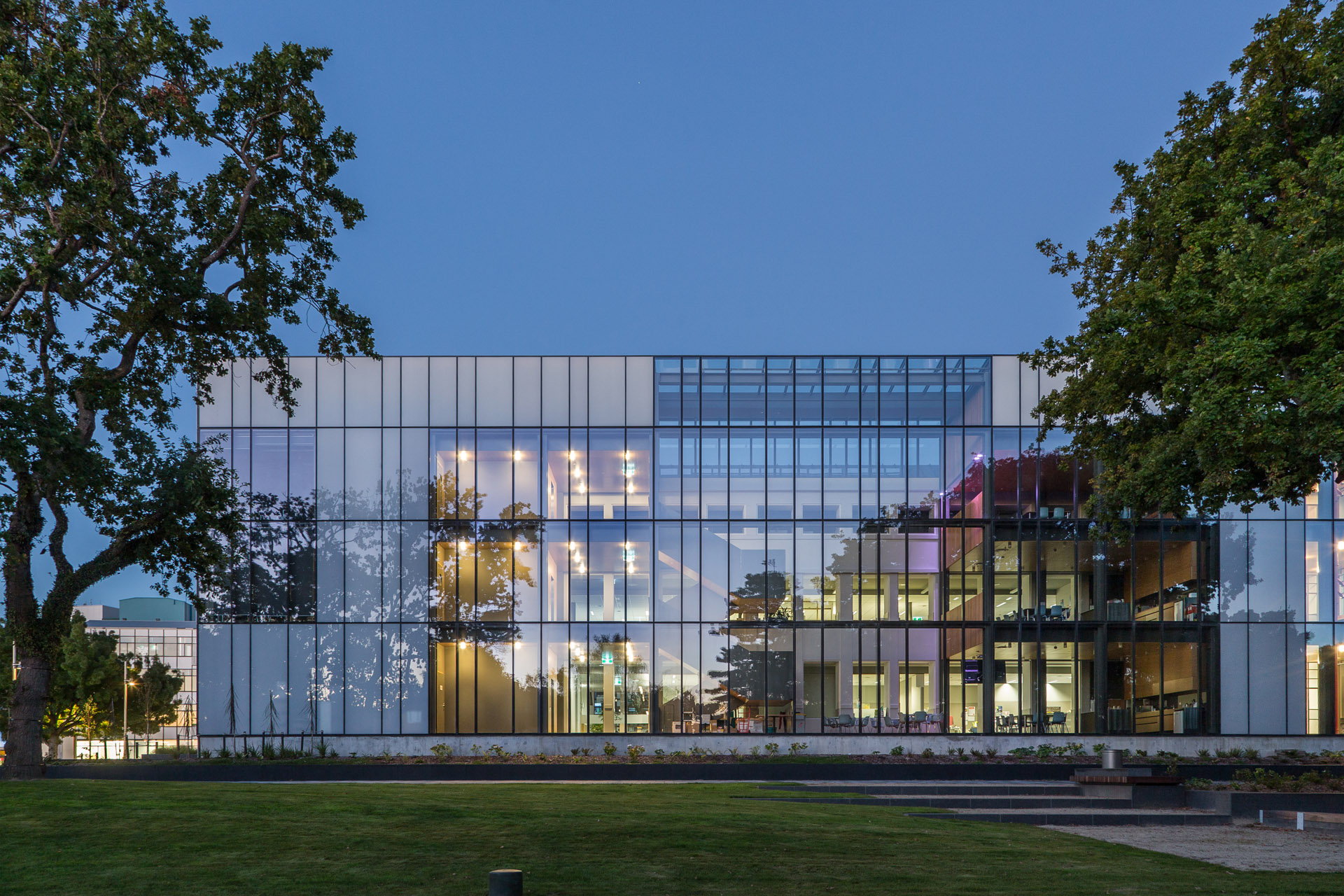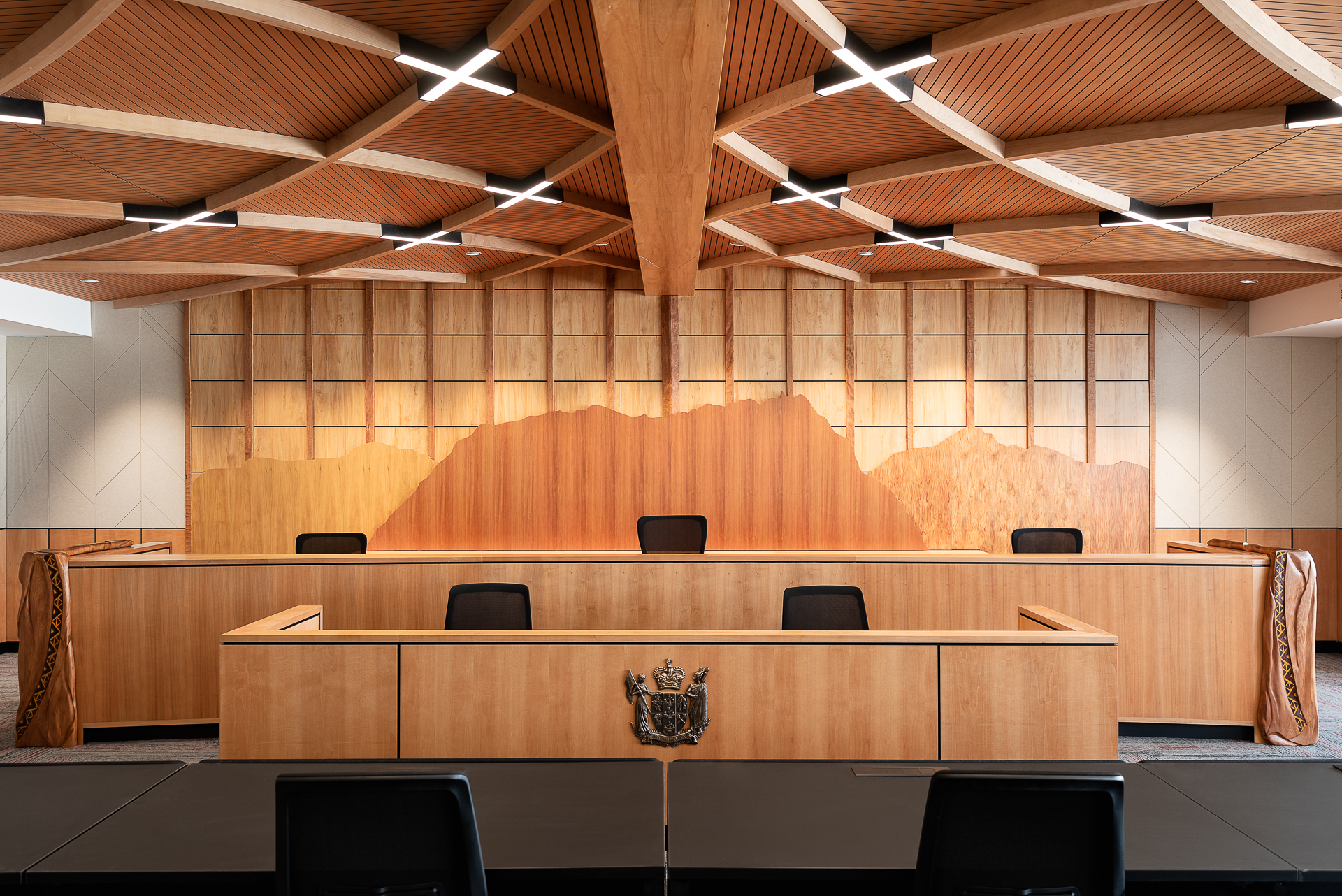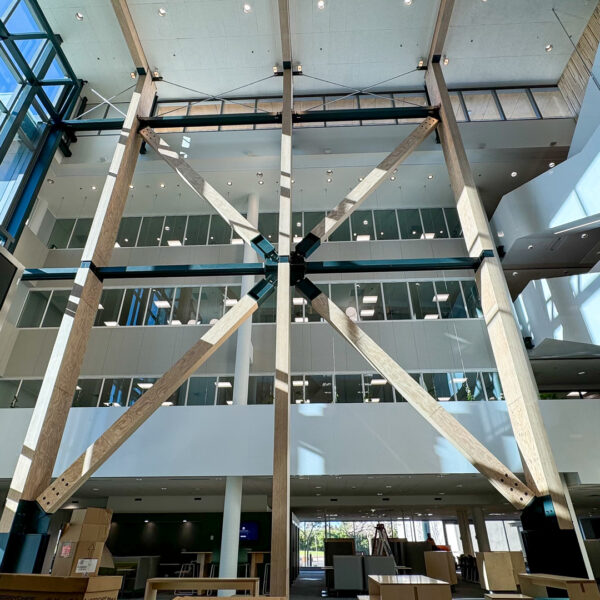AUT – Tukutuku
A bold and visionary new teaching and learning space at the heart of the AUT North Campus is their most ambitious campus development yet. Designed as a responsive, future-proof learning environment, Tukutuku balances enhanced functionality with embodied sustainability.
Tukutuku is an exceptional asset for AUT’s North Campus and its world-ranked health sciences and sports and recreation programmes.
The RDT Pacific Project Management team (formerly Hargrave) have worked alongside AUT from the early development stages over a six-year lifespan to achieve a dynamic and resilient teaching, learning and staff accommodation building for AUT.
Tukutuku comprises a 5,300 m2 five-level full timber structure and 4-level atrium connecting to a 3,600 m2 fully modernised four level existing building and a separate 400 m2 two-level energy centre on a 1.5 hectare building site.
The unique five-level structure is built in locally sourced embodied carbon laminated timber with minimal use of concrete and steel. The timber structure is capable of being disassembled and re-purposed at the end of its economic life.
Sustainability is further supported by an AUT-developed passive first sustainability brief to promote ultra-low energy level sustainability initiatives including ground source heat pumps, PV arrays and rainwater harvesting to support AUT’s target of net zero emissions by 2030.
Project challenges included:
- Ensuring adjacent lecture theatres and library remained operational through two years of construction.
- Refurbishing temporary teaching facilities and relocating staff.
- Demolition of end-of-life buildings and managing asbestos removal from buildings and surrounding land.
- Research and communication to develop a comprehensive brief included Northern Hemisphere study tours and extensive internal stakeholder engagement.
- COVID-19 impacts on design development, suppliers, construction and maintaining economic viability during a two-year border closure.
- Active engagement with Auckland Council regarding unique design features to streamline the building consent process.
- Working through the logistics and operational issues of temporarily exposed timber construction in the centre of an operating campus.
- Integrating the new building with existing facilities including a building that required refurbishing.
The complex responds to AUT’s goal of “everything accessible to support learning” by connecting and enhancing existing teaching and learning facilities to enhance experience and build community amongst ākonga (students) and kaimahi (staff).













